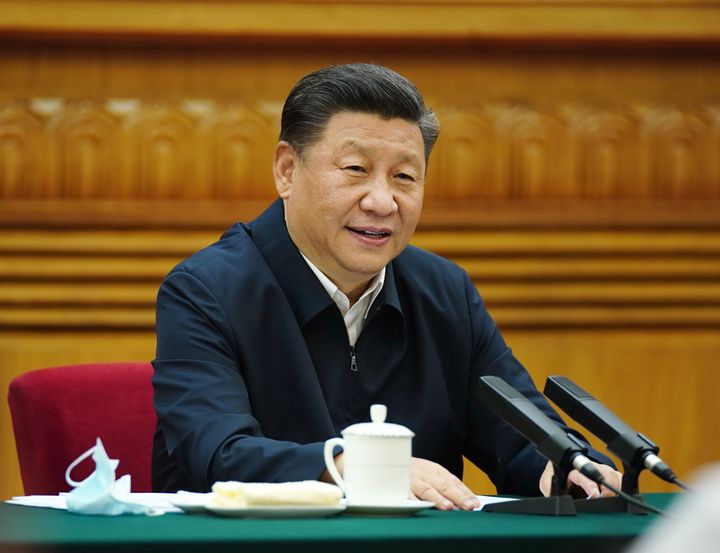
Last week, China reiterated its claims over Bhutan’s eastern sector, but offered an olive branch by proposing a “package solution” to resolve the dispute.
“China’s position remains consistent and clear. The boundary between China and Bhutan has not been delimited and there are disputes in the middle, eastern and western sections,” said China’s foreign ministry spokesperson Wang Wenbin, according to PTI.
Beijing was offering a way out, he added, because it was “opposed to making an issue of these disputes at multilateral forums and China remains in communication with the relevant parties on this issue”.
The details of the package aren’t public yet, but reports say that it is likely to be similar to the territory swap deal China offered Bhutan in 1996.
In 1996, The Hindu said Bhutan’s 4th King Jigme Singye Wangchuck had informed the Bhutanese National Assembly of China’s offer. Beijing, he said, “wanted to exchange the valleys to the north, with an area of 495 square kilometres, with the pasture land to the west, totalling 269 square kilometres.”
The western sector includes Doklam—where India and China were engaged in a 73-day stand-off in 2017. Bhutan had rejected the deal.
While the two countries continued discussions in the following years, China sprang a surprise in June when it objected to a grant request for Sakteng Wildlife Sanctuary in Bhutan’s Trashigang district at a meeting of the Global Environment Facility (GEF) and claimed that the sanctuary was located in a “disputed area”.
The GEF Council dismissed China’s claims and Bhutan said the area has never come up in boundary talks between the two countries.
The boundary talks between Bhutan and China have been limited to three areas — Jakarlung and Pasamlung and one in West Bhutan — Strat News Global had pointed out. Sakteng is not part of any of these.
Pasamlung and Jakarlung Valleys are what China calls the middle area, The Hindu said.
VP Haran, former Indian ambassador to Bhutan and Syria, told HuffPost India that while he was not aware of the details of the current package that has been proposed, the earlier one “made more than two decades back by China envisaged China giving up its claim over the middle sector in return for Bhutan agreeing to give up its claim in the western sector, which includes Doklam.”
Sanjay Pulipaka, senior fellow at the Delhi Policy Group, also told HuffPost India that it wasn’t clear what the components of the package deal offered by China now are. He, however, added that since China has added new territories like Sakteng in its claims, it is probable that Beijing may propose to have control of more territories as part of the package deal.
Suhasini Haidar, writing in The Hindu, also pointed out that while the deal would have resolved the border dispute with China and even given Bhutan a larger chunk of land, it was a matter of concern for India. The Doklam swap, the report said, would give China access to the “chicken neck” of the Siliguri corridor.
The Chinese move at the GEF has convinced Bhutan that if it cedes any ground to appease Beijing, it would only end up fueling its territorial ambitions, Hindustan Times said, quoting people familiar with the developments.
India’s concerns
Experts had told HuffPost India earlier this month that China’s claim over Trashigang district could be seen as a tactic to pressurise India because the territory gives China a strategic advantage over India.
Pulipaka pointed out that Sakteng Wildlife Sanctuary does not share a boundary with China. “However, it is geographically contiguous to the Tawang district in India. Therefore, the Chinese claims in Bhutan are an extension of its claims in Tawang, which implies that Chinese claims keep expanding,” he added.
VP Haran said that India’s views on the matter are also relevant because the location of the tri-junction between India, China and Bhutan depends on sovereignty over Doklam.
“As per the agreement reached between the special representatives of India and China, tri-junction is to be determined in consultation with the third country concerned, Bhutan in this case. No such consultation has taken place so far.”
In 2017, India and China were engaged in a two-month long standoff in the Doklam area, which was resolved after both sides agreed to withdraw its troops. The crisis happened after the Chinese side tried to construct a road in the area and India said it sought to desist Beijing from changing the status quo.
Regarding the Doklam incident, the Committee on External Affairs in a 2017-18 report presented to the Lok Sabha speaker said: “the India side also underlined that the two Governments had in 2012 reached a Common Understanding between their Special Representatives that the tri-junction boundary points between India, China and third countries will be finalized in consultation with the concerned countries. Any attempt, therefore, to unilaterally determine tri-junction points is in violation of this understanding.”
India, meanwhile, has opened a new trade route under the Jaigaon Land Customs Station following a request from Bhutan.
India’s Ambassador to Bhutan Ruchira Kamboj tweeted:
India is also conducting a feasibility study for a rail link between the two countries, India Today reported. It is between Mujnai in West Bengal and Nyoenpaling in Bhutan.
These recent moves by India are part of its existing approach and do not amount to a knee-jerk reaction to Chinese actions, Pulipaka said, explaining that India has close economic relations with Bhutan and was involved in various connectivity projects and hydroelectricity projects as well.
Over the past few years, he said, India has been making attempts to engage with Bhutan through various multilateral frameworks such as BIMSTEC and Bangladesh, Bhutan, India and Nepal (BBIN) initiative.
(With PTI inputs)